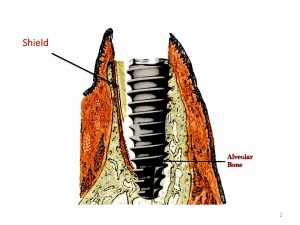 Bone resorption following tooth extraction is a normal and physiological process. This resorption pattern is most significant in the upper anterior (smile zone) region of the mouth where the bone is extremely thin resulting in unsightly tissue defects. Of course, bone can be grafted to restore such defects but it adds significant cost and time to the overall treatment. Extraction site preservation bone grafting and atraumatic root extraction are two primary techniques traditionally used to preserve the bone.
Bone resorption following tooth extraction is a normal and physiological process. This resorption pattern is most significant in the upper anterior (smile zone) region of the mouth where the bone is extremely thin resulting in unsightly tissue defects. Of course, bone can be grafted to restore such defects but it adds significant cost and time to the overall treatment. Extraction site preservation bone grafting and atraumatic root extraction are two primary techniques traditionally used to preserve the bone.
A newer technique known as socket shield has shown to be an effective way to preserve bone and gum tissue following tooth extraction. Socket shield is a type of partial extraction therapy (PET) that involves leaving a thin shell of the root on the buccal (outer) aspect intact. Keeping this root segment preserves the periodontal ligament that connects the root to the bone, hence preserving the bone and its overlying gingival tissue.
A common treatment scenario is partial extraction of the tooth using socket shield technique, immediate placement of a dental implant, minor bone grafting in the gap between the implant and root fragment, and finally placement of an immediate provisional crown. This approach is quite effective in preservation of bone and gum tissue providing it is performed in carefully selected sites that meet several criteria, most importantly lack of significant infection and presence of adequate bone for primary stability of the implant.
Socket shield technique is an effective and predictable way to preserve the bone and gum tissue critical in achieving the desired aesthetic and functional results.
Dr. H. Ryan Kazemi is a board-certified oral and maxillofacial surgeon in Bethesda, MD.